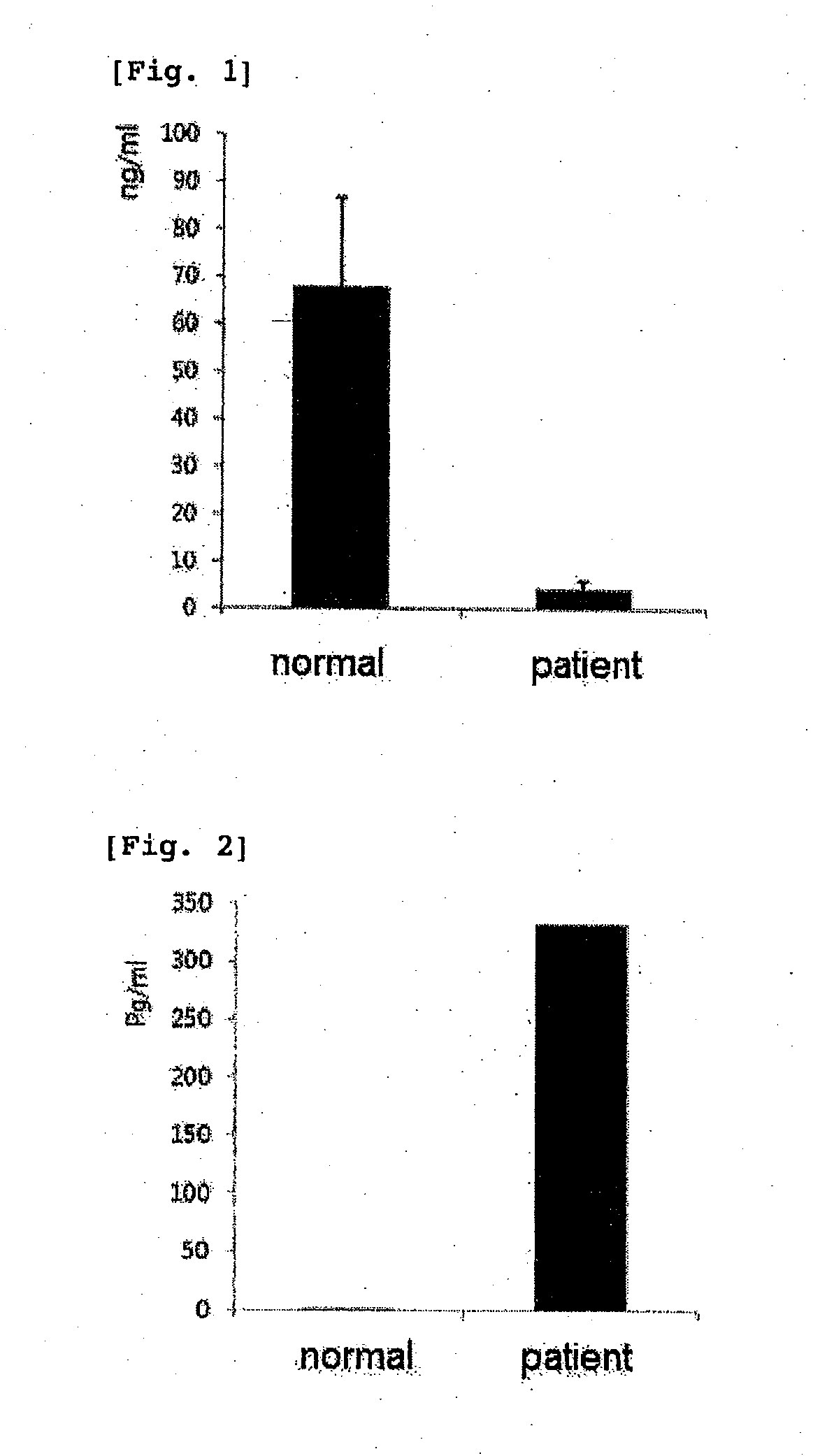Kit for diagnosing prostate cancer and diagnosis method
a prostate cancer and kit technology, applied in the field of prostate cancer diagnostic kits and methods, can solve the problems of increasing the blood level of psa, requiring blood collection, and requiring diagnosis to be performed in hospitals, so as to facilitate collection and facilitate diagnosis of prostate cancer
- Summary
- Abstract
- Description
- Claims
- Application Information
AI Technical Summary
Benefits of technology
Problems solved by technology
Method used
Image
Examples
example 1
Quantification of PSA in Human Urine Using Antibody to PSA
[0036]Urine was collected from each of 20 normal persons and 10 prostate cancer patients and centrifuged to remove the precipitate. PSA in the urine samples was quantified using ELISA (Abazyme cat no EL10005) in the following manner.
[0037]1) A plate in an ELISA kit was coated with an anti-human PSA monoyclonal antibody (cat no: MO-C40081C: C-PSA1, Abazyme, Needham, Mass., USA), and 50 μl of each of the samples was added to each well.
[0038]2) The sample in each well was agitated to spread, and then stored at 37° C. for 30 minutes.
[0039]3) Each well was washed 5 times with distilled water.
[0040]4) The sample in each well was treated with 100 μl of a horseradish peroxidase-conjugated secondary antibody (Abazyme, Needham, Mass., USA) and incubated at 37° C. for 30 minutes.
[0041]5) Each well was washed 5 times with distilled water.
[0042]6) The sample in each well was treated with 100 μl of a substrate solution, and then incubated ...
example 2
Quantification of PSA in Human Blood Using Antibody to PSA
[0046]3 ml of blood was collected from each of 20 normal persons and 10 prostate cancer patients and centrifuged at 10000 rpm for 5 minutes to precipitate the red blood cell clot, and the supernatant sera were separated. PSA in each serum was quantified using ELISA (Abazyme cat no EL10005) in the same manner as Example 1. The results of the measurement indicated that the average value of the amounts of PSA in the 20 normal persons was only 1.0615 pg / ml, whereas the amounts of PSA in the 10 prostate cancer patients varied in the range from 20 pg / ml to 800 pg / ml, and the average value thereof reached 332.5 pg / ml (FIG. 2).
[0047]From the results of Examples 1 and 2, it could be seen that, in the case of the prostate cancer patients, the amount of PSA in the blood significantly increased, whereas the secretion of PSA into the urine showed a tendency to decrease rather than increase. Thus, if the amount of PSA in the urine of a sub...
PUM
| Property | Measurement | Unit |
|---|---|---|
| Density | aaaaa | aaaaa |
Abstract
Description
Claims
Application Information
 Login to View More
Login to View More - R&D
- Intellectual Property
- Life Sciences
- Materials
- Tech Scout
- Unparalleled Data Quality
- Higher Quality Content
- 60% Fewer Hallucinations
Browse by: Latest US Patents, China's latest patents, Technical Efficacy Thesaurus, Application Domain, Technology Topic, Popular Technical Reports.
© 2025 PatSnap. All rights reserved.Legal|Privacy policy|Modern Slavery Act Transparency Statement|Sitemap|About US| Contact US: help@patsnap.com

